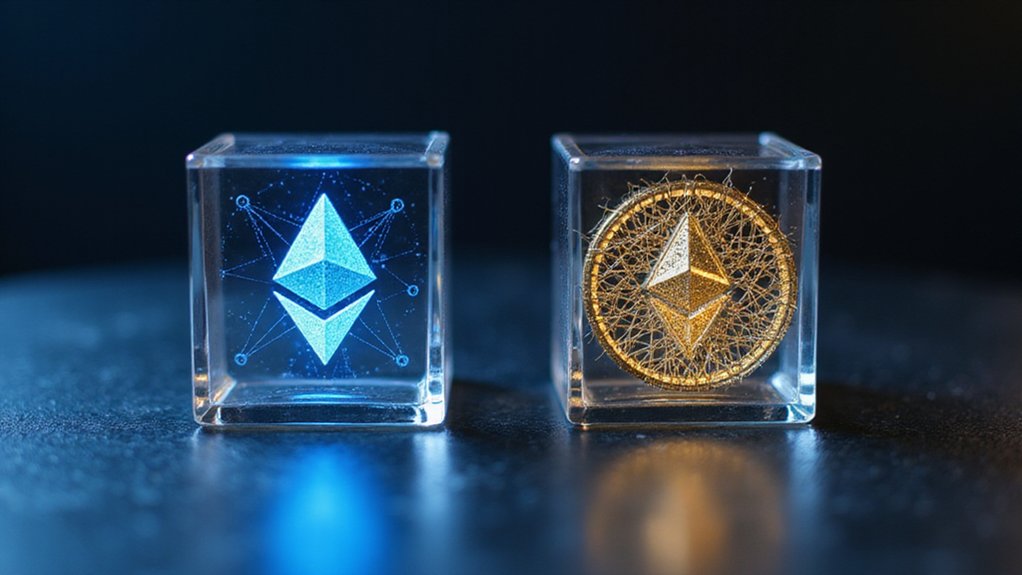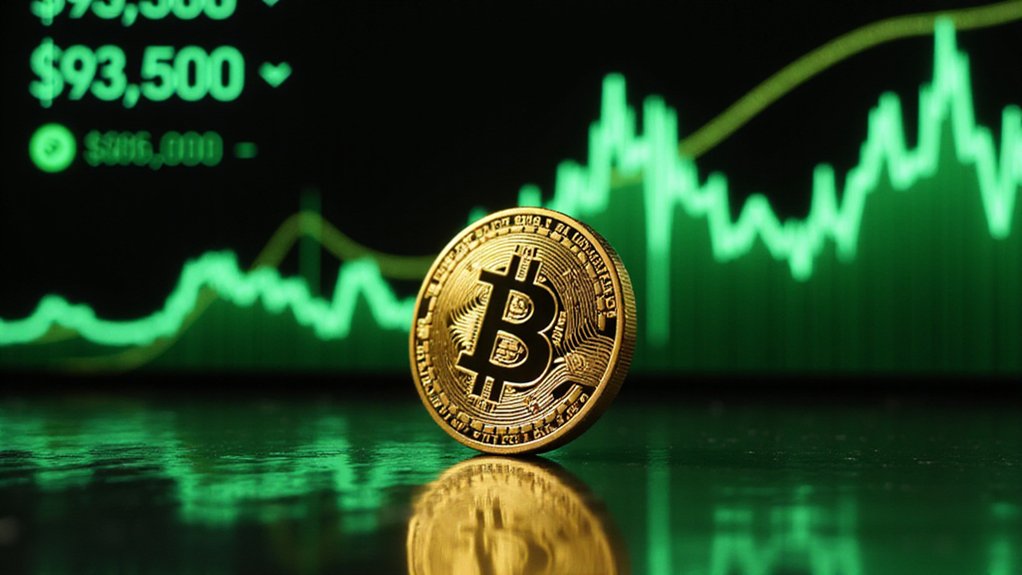WETH (Wrapped Ether) is simply ETH transformed into an ERC-20 token while maintaining a perfect 1:1 value ratio. This ingenious workaround addresses a fundamental incompatibility: Ethereum’s native currency predates its own token standard. By depositing ETH into a specialized contract, users receive WETH tokens that function seamlessly within DeFi applications—serving as trading pairs, collateral, and liquidity pool assets. The crypto ecosystem’s architectural quirks often necessitate such elegant solutions.

The seemingly redundant concept of “wrapped” cryptocurrency—specifically Wrapped Ether (WETH)—represents one of those peculiar blockchain solutions that, while initially appearing superfluous, addresses a fundamental technological limitation. At its core, WETH is simply Ethereum (ETH) that has been encapsulated within the ERC-20 token standard, maintaining a steadfast 1:1 value ratio with its native counterpart. This conversion, mundane as it might seem, resolves a surprising incompatibility: Ethereum’s native currency predates its own token standard.
The mechanics of this financial transmutation are elegantly straightforward. Users deposit ETH into a specialized smart contract that functions as a custodial vault, whereupon an equivalent amount of WETH tokens are minted and delivered to the depositor’s wallet. WETH tokens are fully ERC-20 compatible tokens that can integrate seamlessly with the broader DeFi ecosystem.
The reverse process—unwrapping—simply returns the original ETH while burning the corresponding WETH. This rather circular journey serves an essential purpose in the DeFi ecosystem.
While ETH remains the lifeblood of the Ethereum network (paying for gas fees, securing the chain through staking), its non-compliance with the ERC-20 standard creates a compatibility gap that WETH neatly bridges. This standardization enables direct trading against other tokens on decentralized exchanges like Uniswap and SushiSwap, where ETH would otherwise sit awkwardly outside the established protocol frameworks.
ETH powers the network, but WETH brings native Ethereum into standardized interoperability with its own ecosystem’s DeFi applications.
WETH’s utility extends well beyond mere trading pairs. It serves as collateral in lending platforms such as Aave and Compound, contributes to liquidity pools alongside stablecoins, facilitates yield farming strategies, and even powers NFT marketplace transactions on platforms like OpenSea. By following the ERC-20 standard, WETH benefits from the same mandatory functions that ensure interoperability across the entire Ethereum ecosystem.
The token’s standardization also enables interoperability with layer-2 solutions and alternative blockchains via cross-chain bridges.
One might reasonably question the efficiency of requiring users to perform an additional conversion step merely to use ETH in its own ecosystem. Yet this peculiar workaround—this wrapping of the unwrappable—exemplifies blockchain’s evolutionary nature, where pragmatic solutions often precede elegant redesigns. In cryptocurrency’s strange financial universe, sometimes you must first package something to truly release it.
Frequently Asked Questions
How Do I Convert ETH to WETH and Back?
To convert ETH to WETH, users can employ several methods: DEXs like Uniswap, wallet swap functions, NFT marketplaces, or direct smart contract interaction.
The process involves connecting a wallet, selecting tokens, reviewing the 1:1 conversion rate, confirming the transaction, and paying gas fees.
Converting back follows the same steps in reverse.
Both wrapping and unwrapping maintain a perfect 1:1 ratio (minus those pesky gas fees that, naturally, the Ethereum network demands as tribute).
Is WETH Safer Than ETH for Trading?
Neither WETH nor ETH is inherently “safer” for trading—they present different risk profiles.
WETH introduces smart contract risk (the wrapper contract could theoretically be compromised) but offers seamless ERC-20 compatibility for DEX trading.
Native ETH eliminates this contract layer but may require additional conversion steps for certain trades.
The fundamental security of both ultimately derives from Ethereum itself, with WETH simply adding a thin technological veneer to facilitate broader DeFi functionality.
Are There Fees for Wrapping and Unwrapping ETH?
Yes, there are fees for wrapping and unwrapping ETH.
These transactions require interaction with the WETH smart contract on the Ethereum blockchain, necessitating standard gas fees (paid in ETH) that vary with network congestion.
While the conversion ratio remains perfectly 1:1, users must account for these computational costs—a fact that sometimes surprises crypto novices.
The wrapping process itself doesn’t incur exchange fees, but the blockchain’s computational resources aren’t free, regardless of which platform facilitates the transaction.
Can WETH Be Staked Like Regular ETH?
WETH itself cannot be directly staked for Ethereum network validation like regular ETH.
This fundamental distinction escapes many novice crypto enthusiasts.
However, WETH can generate yield through alternative DeFi mechanisms: lending platforms, liquidity provision, and yield farming protocols.
For those seeking both staking rewards and DeFi utility, liquid staking derivatives (like stETH, cbETH, or WBETH) offer an elegant solution—these wrapped tokens represent staked ETH plus accrued rewards while maintaining ERC-20 compatibility for various yield-generating activities.
What Happens to WETH if Ethereum Undergoes Major Protocol Changes?
WETH’s remarkable resilience during protocol changes stems from its fundamentally simple design—a wrapper contract holding ETH 1:1.
Through significant upgrades like the Merge, WETH maintained its core functionality despite temporary exchange suspensions.
Future Ethereum improvements (scalability solutions, gas optimizations) might enhance WETH’s usability rather than disrupt it.
While catastrophic bugs or contentious forks represent theoretical risks, WETH’s straightforward mechanism insulates it from most protocol changes that don’t fundamentally alter Ethereum’s execution layer.









